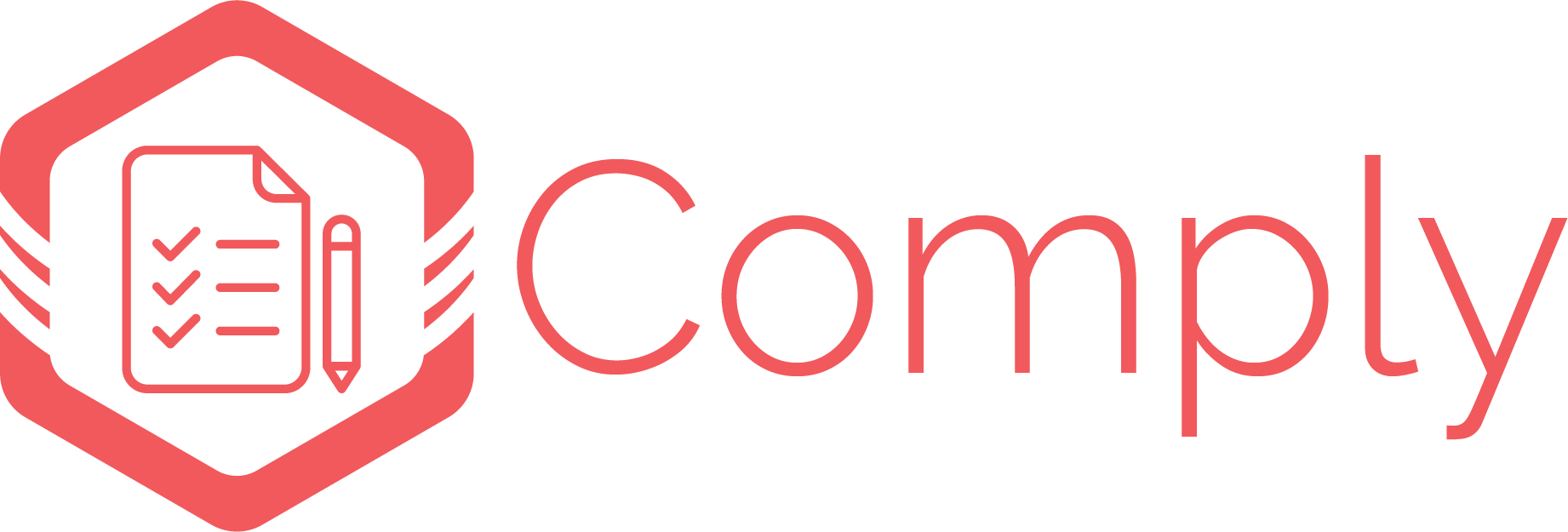
Easily identify requirements in a document, analyze their quality and generate coverage and compliance matrices faster and better.
Main use cases
Clients
Maintain repositories of quality requirements
Maintaining quality requirements repositories is crucial to ensuring the compliance and efficiency of internal processes. This task involves collecting, analyzing and managing requirements to ensure they are met and traceable. Modern tools, such as Comply, facilitate this management by automating the identification, classification and traceability of requirements. Comply also enables ambiguities, duplications and contradictions to be detected, while providing indicators of quality and comprehensibility.


Clients
Identify document requirements
Identifying document requirements is a crucial task when it comes to ensuring the compliance and quality of tender responses. To this end, Bee4win offers an innovative solution called Comply, which takes the form of a Microsoft Word add-in and a web application. This software enables users to detect, extract and manage requirements, risks and issues present in various types of documents, such as specifications, tender documents, contracts and functional programs.
Comply uses innovative Automatic Natural Language Processing (NLP) and Artificial Intelligence (AI) technologies to recognize and capture requirements in various document types, including PDFs, texts and Word files. This technology makes it possible to adapt to users’ specific contexts, offering great flexibility in requirements management.
The Comply tool offers advanced functionalities for identifying, transposing and tracking tender requirements. It also enhances the robustness of the tender response process, by simplifying the task of summarizing tender documents, and providing rapid answers to questions asked about tender documents.
Clients
Build and share your requirements matrices
The Comply solution is designed for professionals responsible for analyzing documents describing a requirement, such as specifications, consultation files, contracts, functional programs and specification files. Comply helps users to identify and extract from documents requirements, identified risks, clarification questions to ask, and important information to trace. In addition, it enables teams to collaborate on a requirements matrix via a web application, manage and export requirements from multiple documents, and share requirements matrices with additional users who don’t have the Word add-in.
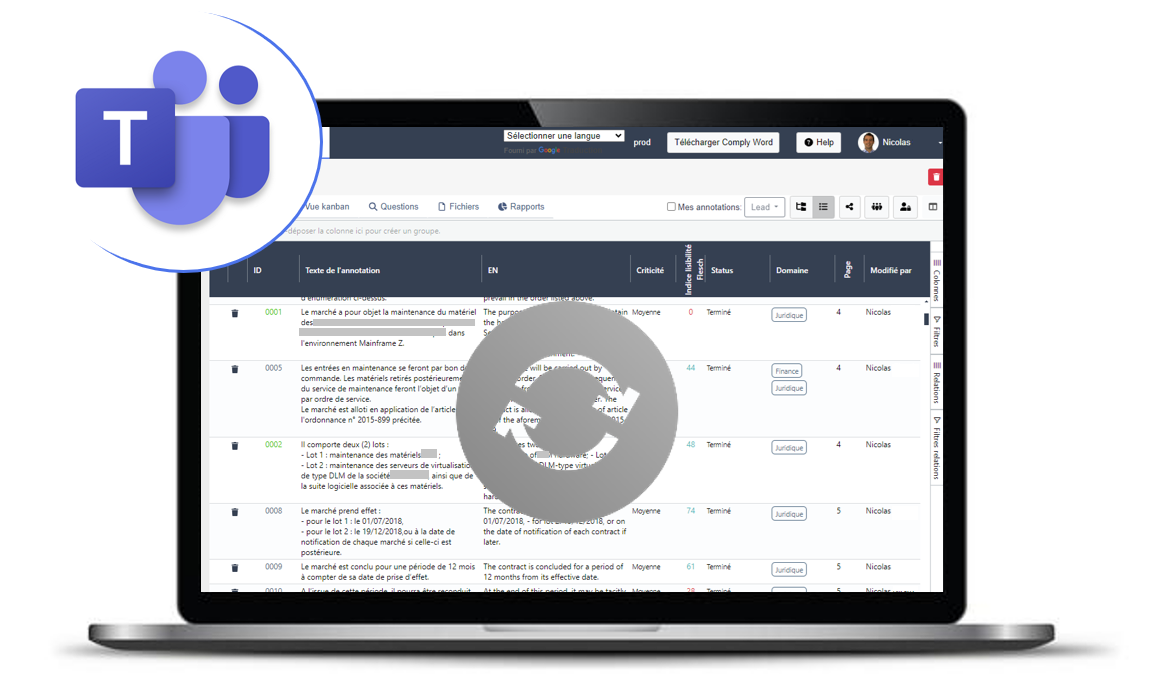

Clients
Evaluate the conformity of responses
Conformity assessment is a crucial step in the process of managing the requirements and risks associated with the drafting of technical documents. This assessment ensures that documents comply with current norms and standards, as well as with project-specific requirements. It involves identifying, extracting and classifying requirements, as well as detecting ambiguities and potential contradictions. Innovative tools like Comply make it possible to perform these tasks efficiently and rigorously.



The tool is simple and easy to use, saving considerable time (4 hours instead of 2 weeks to produce a matrix of 1,200 requirements) and improving the quality of the result.
Antoine, Technical specifier
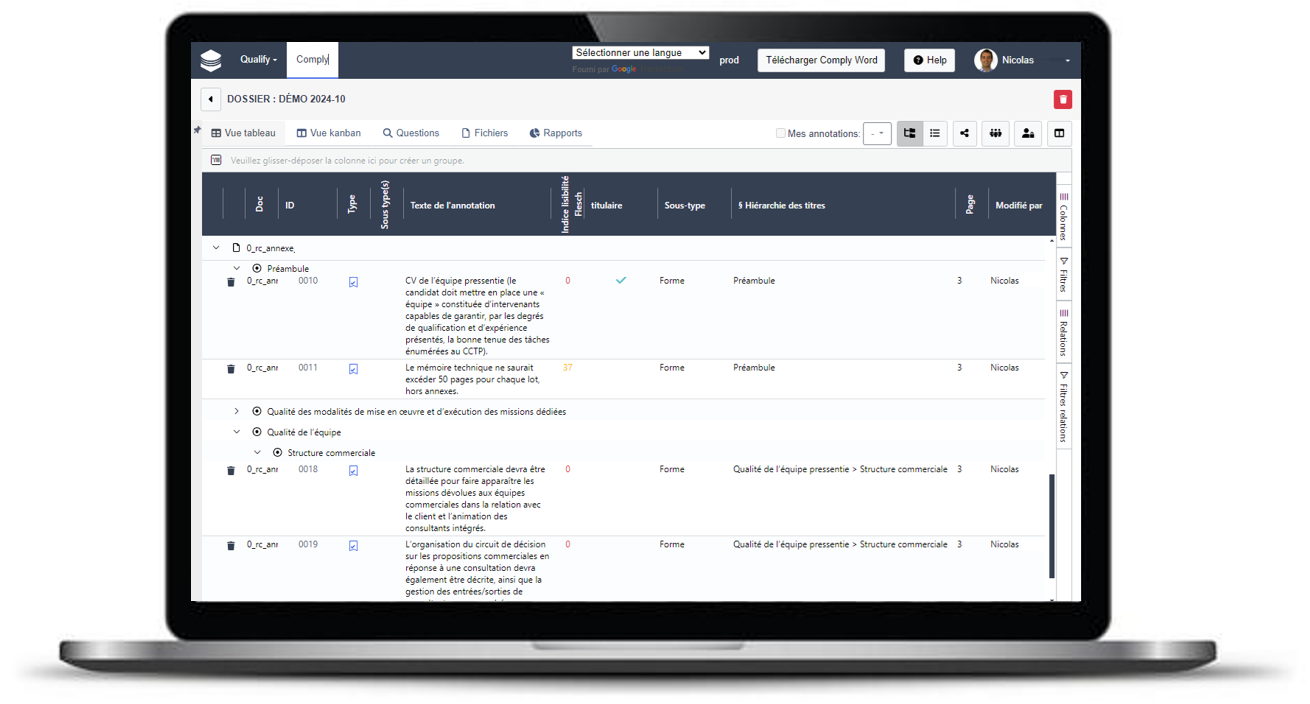
Providers
Identify & classify requirements
The classification of requirements is essential for the efficient organization of repositories. Comply lets you add contextual information via pre-existing or customizable tables. This approach makes it possible to structure requirements in a coherent way that can be adapted to specific project needs.
Providers
Detect ambiguities, duplications and contradictions
Risk and ambiguity management is an essential component of repository maintenance. Comply detects ambiguities and inconsistencies in the formulation of requirements, between requirements and their properties, or between requirements in different documents. This feature helps to anticipate and resolve potential problems before they become critical.
Comply also offers tools for assessing the business and legal risks associated with requirements. Thanks to advanced NLP and AI technologies, users can tailor risk recognition to their specific context, ensuring proactive risk management.
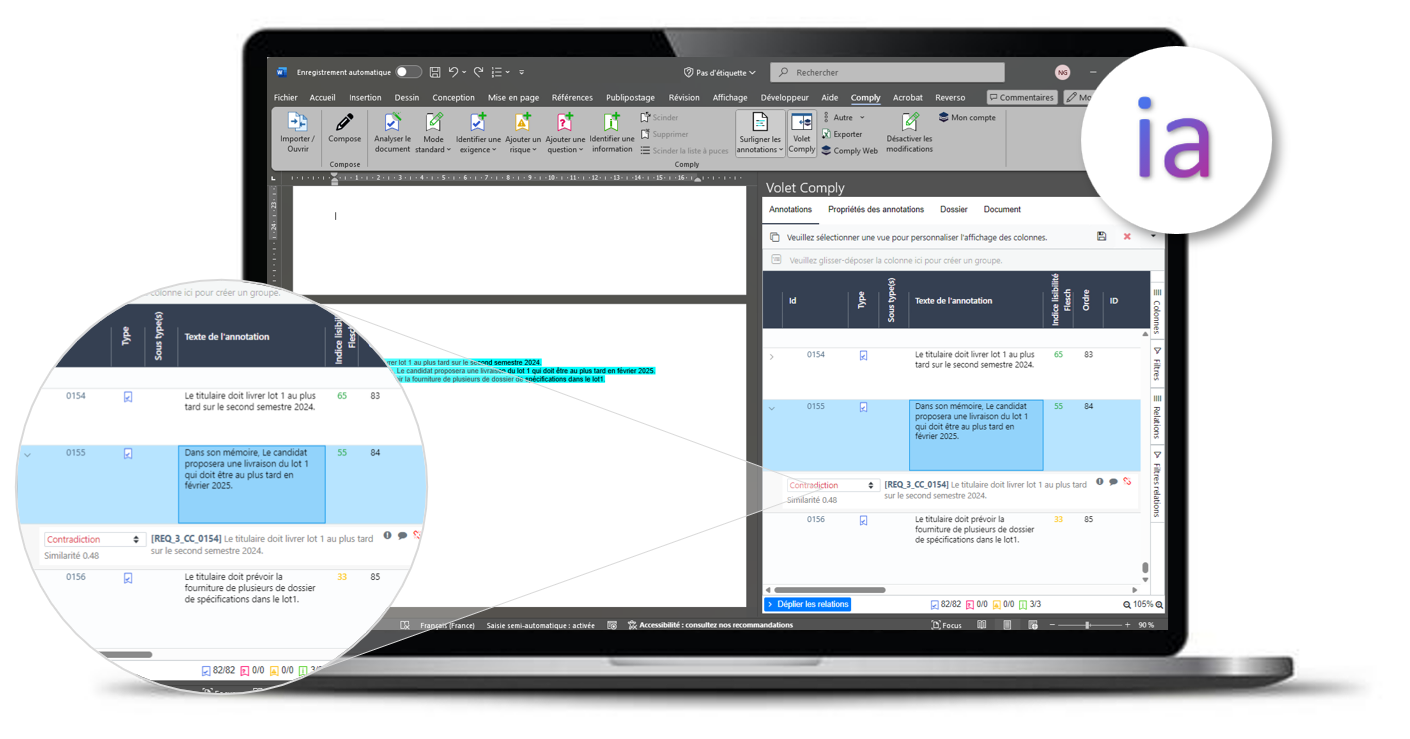

Providers
Track and share the coverage and compliance of your offering
Requirements traceability is a critical aspect of repository management. Comply tracks responses to requirements from different documents, records clarification cycles and produces correlation, traceability or compliance matrices. This ensures that every requirement is tracked and that responses are fully documented.
Comply also facilitates the construction of requirements matrices with customizable and reusable structures. These matrices can be shared with the team via a web portal or exported in several formats (xls, csv, xml). This flexibility makes it easy to synchronize requirements between different documents, such as a specification and a technical proposal, thus measuring coverage and traceability between these documents.
Providers
Share commitments with the project team
Comply makes it easy to collaborate and share repositories. Requirements matrices can be shared with additional users who do not have the Word add-in, and multiple users can edit matrices simultaneously. This feature encourages the co-construction of repositories and the alignment of teams on common requirements.
Comply also enables repositories to be synchronized with other requirements management, PLM (Product Lifecycle Management) and ALM (Application Lifecycle Management) tools. This integration ensures harmonized requirements management throughout the project lifecycle, from design to implementation.


Clients and providers
Work together in collaborative mode
One of Comply‘s key features is the ability to make simultaneous, multiple modifications to requirements matrices. This real-time collaboration capability is essential for teams working on complex projects requiring constant coordination.
Comply also leverages the capabilities of Sharepoint, a collaborative platform where users can easily and securely share their annotated documents with other team members. This functionality is essential to ensure good coordination between the various project players, and to guarantee that all stakeholders have the necessary information at the right time.
Clients and providers
Track your indicators on a dashboard
Comply offers summary dashboards that allow you to quickly visualize key indicators. The dashboard is an invaluable tool for monitoring project progress and making informed decisions.
The application also offers quality indicators to measure the comprehensibility of requirements and the quality of a specification. Readability and ambiguity scores can be calculated to assess the clarity of requirements. These indicators can be adapted to suit the project context and specific needs, and can be monitored.
In addition to quality indicators, there are additional functionalities for detecting similarities, contradictions and redundancies between requirements. These capabilities enhance the consistency and clarity of repositories, by identifying potential areas of confusion or overlap.
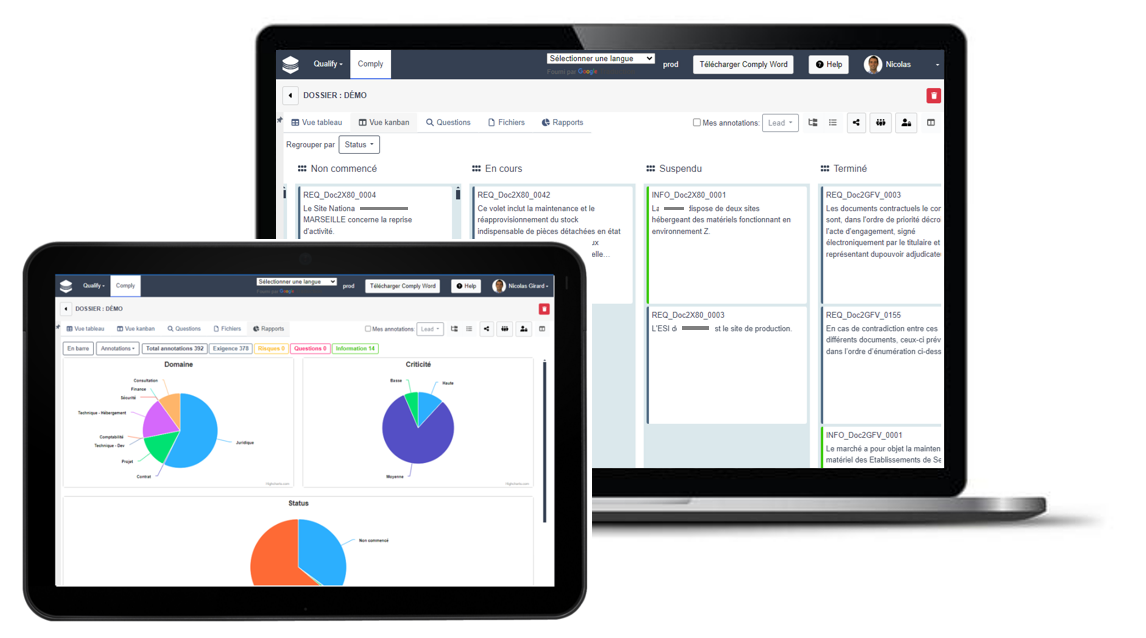

Clients and providers
Translate documents into many languages
Comply is accessible via an interface in English and French, with the ability to translate documents into numerous languages thanks to the integration of DeepL Pro. This linguistic flexibility enables users to work in their preferred language, making it easier to understand and manage requirements. This feature is particularly useful for international projects, enabling smooth communication and mutual understanding of requirements.
Clients and providers
Monitor progress and conformity of deliverables
Requirements traceability is a critical aspect of repository management. Comply tracks responses to requirements from different documents, records clarification cycles and produces correlation, traceability or compliance matrices. This feature ensures that every requirement is tracked and that responses are fully documented.
Comply also facilitates the construction of requirements matrices with customizable and reusable structures. These matrices can be shared with the team via a web portal, or exported in a variety of formats (xls, csv, xml). This flexibility makes it easy to synchronize requirements between different documents, such as a specification and a technical proposal, thus measuring coverage and traceability between these documents.

Découvrez nos services
Discover our services
Discover our commitments
Copyright © 2025 Bee4win

